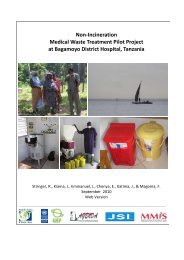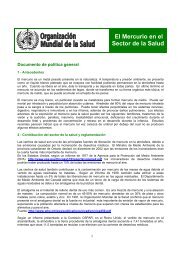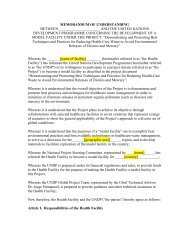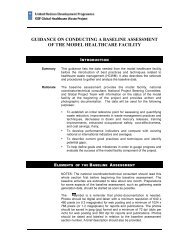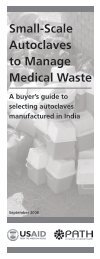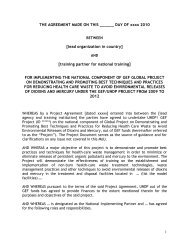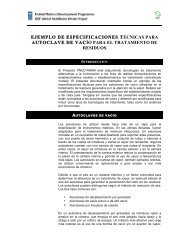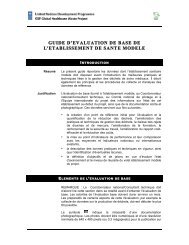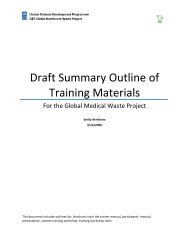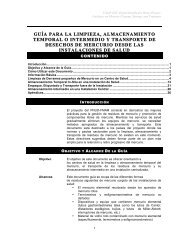Latvia
Latvia
Latvia
Create successful ePaper yourself
Turn your PDF publications into a flip-book with our unique Google optimized e-Paper software.
Health systems in transition<br />
<strong>Latvia</strong><br />
that engaged in contracting with providers. However, these sickness funds<br />
were never financed through earmarked social insurance contributions; at all<br />
times throughout their short existence they received their finances from state<br />
budgetary sources. Although the change from tax financing to social insurance<br />
financing was discussed, it did not receive enough support and commitment<br />
among the reformers, and the idea was therefore abandoned.<br />
Moreover, it soon became evident that small decentralized sickness funds<br />
had a limited capability to meet efficiency requirements. The main risk areas<br />
were inpatient care and expensive diagnostic examinations. A solution was<br />
therefore sought in the successive merger of sickness funds, eventually resulting<br />
in a single centralized purchaser for the entire country, the SCHIA, with its five<br />
territorial branches (for more information on these developments see Section<br />
2.3 Decentralization and centralization).<br />
The other major reform activity in the area of financing involved the<br />
introduction of OOP payments in the form of patient fees for appointments with<br />
doctors providing statutory services (1996). Shortly afterward co-payments for<br />
specific services were introduced and in subsequent years user charges evolved<br />
into a fairly complex system of patient fees plus co-payments. This coincided<br />
with the development of VHI programmes, which were initially only sold to<br />
cover various combinations of user charges.<br />
According to data reported to the SCHIA (shown in Table 3.2), the main<br />
revenue source for the health care system in 2004 was general taxation at<br />
central and municipal levels, contributing approximately 75%. The second<br />
most significant source, with a contribution of more than 20%, was household<br />
OOP payments for health care in the form of formal user charges and VHI.<br />
Revenue was also contributed from additional charges, such as hotel facilities.<br />
Formal user charges, including OOP payments and payments in the form of<br />
VHI contributed 4.4% of the total revenue (VHI pays for 34% of user charges).<br />
Local governments have very limited financial resources from local government<br />
taxations through the levying of charges for supporting health care; however,<br />
as owners of health care institutions, they are interested in sustaining the<br />
attractiveness and competitiveness of local providers.<br />
However, these figures have to be interpreted with great caution. First,<br />
they do not refer to revenue for total health care, but represent those that are<br />
reported to the SCHIA. These figures therefore exclude the revenue share for<br />
the programmes that are financed through direct budgetary transfers. Second,<br />
the national data presented in Table 3.2 differ from WHO estimates presented<br />
in Table 3.1, Fig. 3.5 and Fig. 3.6, which show OOP payments to have been<br />
approximately 48% in 2004. It should be noted that private expenditure on<br />
<br />
It is estimated that approximately 96% of the total health budget is administered through the SCHIA, leaving<br />
only approximately 4% to be allocated through direct budgetary transfers.<br />
80





